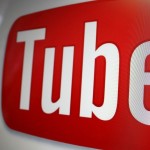Science as a Religion
by Dr. Logan Paul Gage
Filed under Uncategorized

This essay is drawn from Dr. Logan Gage's new video course, How Science Became a Religion, available at NewPolity.com—and free for a limited time! The first lesson is below:
Christians and non-Christians alike tend to value the language of natural science as the most appropriate and authoritative language to speak within the "public square" of liberal nation states. An argument from theology will get you nowhere; an argument from one's personal experience is moot; but an argument of science stirs us to assent. Nowhere is this more clear than during an election, in which the degree to which a candidate "believes in science" is seen as a crucial marker of his ability to lead the country toward good ends.
This makes sense, because liberalism (often considered Classical Liberalism, which is the reigning modern worldview and not another term for Democrat), is predicated on neutrality. Liberal states have no state churches, official belief systems, philosophies or theologies. Such opinions are the private quirks of individual minds, the truth or falsity of which is irrelevant to a primary "public" knowledge about matters of law, policy, public interest, and the like. This public knowledge is neutral, in the sense that it is objective, applying to everyone, and if one is going to make headway in a liberal state, one must check one's private, opinionated language at the door.
The language of science fits well into this schema, because it has, likewise, taken up what appears to be a neutral, objective, dispassionate stance of determining the cold, hard facts. The person who speaks from the perspective of science is able to speak apart from any merely private opinion, club, faction or denomination of belief. He speaks as a qualified expert, a position which indicates his disinterested removal from the moods and paradigms of the moment, and his unique ability to access the objective, unvarnished truth.
But is this really how the scientific community operates? In 1962, Thomas Kuhn wrote his ground-breaking book The Structure of Scientific Revolutions, in which he argues that scientific consensus is not neutral and disinterested, but emerges out of paradigms held by factions and in-groups devoted to their own survival. It is, hands down, the single most influential work of philosophy of science in the last century. It’s core message, however, has not filtered down to popular culture, because questioning the disinterested status of science is, peripherally, to question the disinterested neutrality of liberal nation states. The rest of the essay proceeds from his insights.
Science Textbooks
Think about the textbooks from which we all learn about science and how they form our minds. The image of science they present is as glossed over as a tourist brochure.1 Textbooks tend to praise the achievements of great lone scientists and downplay science as a communal, cultural enterprise. Perhaps most perniciously, because of their aim of getting novices up to speed so that they can understand (and even practice in) today’s scientific landscape, they select episodes in the history of science and arrange them in a seamless narrative all leading to…us, scientific modernity. Inevitably, it makes science look like a straight line of progress, only opposed by the forces of superstition.
If you look at the actual revolutions of thought in the history of science this isn’t what you’ll see. Science is done by real human beings. Its history is a history of fights between groups of scientists not only over particular facts but over method and what counts as science at all. There is a historical and sociological aspect to science that is essential to seeing what this modern project really is.
The history of science is more than the history of ideas; it is also a history of real people, with all their flaws and foibles. There is more to science than facts simply presenting themselves to great minds. It is a history of genius and innovation, sure. But it is also a history of cliques defending theories despite counter-evidence, scientists hitting dead-end after dead-end. But these never make it into the textbooks, both because it would undermine the progressive, liberal narrative that is meant to attract new scientists to the discipline, and also because stories of dead ends don’t help students learn current scientific theories. Any history that includes successes but never failures is bound to look linear and progressive.2 Yet the effect is painting a picture of science that is pure science fiction.
Normal vs. Revolutionary Science
Most science is not revolutionary. That is, it doesn’t set out to answer groundbreaking questions but to slightly extend our knowledge in some very limited domain. Normal science doesn’t question its foundations but, rather, works within a paradigm or large set of settled assumptions about its subject matter.3 Now, paradigms can sound very negative, because their job is to be settled and dogmatic, to force us to view nature in preconceived categories and rigidly indoctrinate students. However, the advantage of paradigms is that the scientist doesn’t have to constantly justify her basic outlook but can treat some things as settled and dive deeper into nature on those assumptions. Kuhn likens it to a settled judicial decision.4 In this way, real but limited progress is made.
But there are also periods of science where there is a sense of unease and dissatisfaction with the reigning paradigm - particularly the baroque Ptolemaic model of the solar system. In these revolutionary periods, fundamental assumptions are challenged.
Importantly, this is not a dispassionate process by which the evidence is obvious to all and the best theory automatically wins out. New paradigms are created not by seasoned veterans of the field but by the young or those new to the field who haven’t had their minds ossified by years of thinking in the old paradigm.5 Instead of convincing the old guard, advocates of the new paradigm simply attract more young scientists to their research program (e.g., they attract more graduate students with an exciting new way of thinking).
And the minute the new paradigm wins out, say, the Copernican model, its rivals are ridiculed as “non-scientific.” The old guard is shunned, their work ignored.6 The revolution does not take place because the old guard become convinced by overwhelming evidence, see the light, and recant. (That is to say, the scientists do not actually behave scientifically, disinterestedly following the evidence wherever it leads.) Rather, the revolution happens when they die off. The historical record challenges the positivist narrative of science as uniquely rational and automatically progressive. Science isn’t populated by Spock-like, neutral, open-minded observers following the evidence wherever it leads. It is populated by actual humans.
There is a chaotic and competitive pre-paradigm period where the field has no consensus and competing theories jockey for dominance; then a breakthrough that establishes a new paradigm; followed by a long period of normal science; until anomalies with that paradigm build up; a crisis occurs; and we get the next revolutionary event, the new paradigm, and a period of normal science again.
No paradigm can solve all problems. In fact, if it did, there would be no normal science to do. So new paradigms have unsolved problems for which they issue promissory notes; it is only a matter of time, it insists, until the problems are solved. These puzzles may or may not fester and come to be seen as problems. Whether puzzles become problems and create a “crisis” has much to do with the particular psychological and sociological facts about the research community. As Thomas Kuhn says, “every problem that normal science sees as a puzzle can be seen, from another viewpoint, as a counterinstance and thus as a source of crisis.”7
In cases as diverse as the Copernican revolution in astronomy, Lavoisier’s oxygen theory of combustion in chemistry, and the emergence of Einsteinian relativity theory in physics, puzzles had to seem like problems—like a crisis—before radically new thinking could emerge. And what feels like a crisis is highly dependent on the particular personalities involved.8 For instance, some astronomers began to see Ptolemaic epicycles (circles upon circles) as clunky and aesthetically displeasing while others did not. There were also social factors like the need for a new calendar, the growing dislike of medieval Aristotelianism, and the rise of Renaissance Platonism.
New theories are responses to a felt crisis, a personal and social phenomenon—perhaps caused by the evidence but certainly not necessitated by it. Aristarchus, for instance, anticipated Copernicus by almost two millennia. But the social setting was not ready for the new theory. Leading thinkers felt no dissatisfaction with the Ptolemaic model. This evidences against the simple positivist view of science as a slow ratcheting up of observations leading to the formation of obviously true theories to account for the data. The right scientific theory does not emerge automatically.
Paradigms: The Good, the Bad, and the Ugly
Scientists prize being objective and rigorous; but they’re people, not robots. People are those that explore and all people have a particular paradigm with which they explore nature. Paradigms can distort our vision, but they also make vision possible by organizing a sea of chaotic data into a pattern. None of us are free from having one because all of us need one. Without one, we would be impersonal actors without the ability to relate and to love.
The late 20th Century saw an increasing recognition that the modern scientific view of facts and theories was too simple. From the Scientific Revolution to the Logical Positivists it was claimed that rational scientists must be presuppositionless machines who go around collecting pure facts until theories emerge pristine from the data. In other words, scientists could be dispassionate observers of nature. We all sympathize with this view, since we want our theories to be responsive to facts rather than our hopes and wishes.
But philosophers began to notice that we don’t just see the world but that we see under a description. We don’t just see, but we see as.9 If you’ve seen a Magic Eye drawing and then suddenly your mind recognizes a pattern and you see the unified image of a car in what had previously appeared as a bunch of colors, then you’ve noticed this yourself. Or perhaps you’ve had this experience with one of the famous Gestalt images like the drawing that is simultaneously a young lady and an old lady, or Wittgenstein’s duck-rabbit. You tend to see the image one way at first, but then with effort you can see the image the other way. But once you lock on to the second image, it becomes difficult to see the original one. Your shift in perspective, it is important to notice, is not simply caused by new evidence or data. It has to do with how the existing data is imagined, conceptualized, or interpreted.

Rather than thinking our prior beliefs and expectations “pollute” our pure experiences, we should thank God that they do. We’d be stuck in a world of sensations rather than objects if we couldn’t bring concepts to bear in our visual processing. We don’t infer all our theories from sensations. Aristotle and Aquinas recognized this long ago. They didn’t build their epistemology on animal sensations but on our ability to perceive natures and thereby populate our minds with ordinary concepts like humans, apples, and cats.
Still, paradigms do restrict our vision. They limit our focus. But this is not all bad, even claiming that it is “essential to the development of science.”10 Paradigms give us a kind of mental stability: they are fixed points of reference. It is a fully rational thing not to give up your old point of view for a new one at every turn. If everything was up for grabs at all times, we’d never make any headway. Paradigms allow scientists to stop arguing about fundamental issues and start solving puzzles from within the paradigm. The paradigm tells them what questions are significant enough to explore and how to go about answering them (i.e., via paradigmatic experiments). Half of the work is already done for the scientist by the paradigm.
Consensus
It is often argued that science is, unlike religion and philosophy, characterized by consensus and wide-spread agreement. Therefore, it uniquely promises to make progress and solve problems. However, with the notion of paradigms, I hope we can see that modern science is characterized by consensus because scientists are taught the same paradigm in graduate school and the community enforces a rather rigid orthodoxy. Vocal questioners of the paradigm, no matter how credentialed, have trouble publishing in mainstream journals and presses, are unlikely to receive tenure, and are effectively excommunicated by being labeled science deniers or pseudo-scientists.
I saw this happen with a friend who holds two excellent Ph.D.s and held a joint appointment between the NIH and the Smithsonian. When it became suspected that he harbored scientific doubts about the power of the neo-Darwinian selection-mutation mechanism and might even be open to an intelligent design explanation for features of the living world, he was harassed by his colleagues who even hid his specimens so that he could not continue his research. This is highly ironic in light of the positivist narrative of medieval orthodoxy enforced by the Inquisition.
Science and Metaphysics
At any rate, paradigms are larger than just a certain explanation for how this or that natural thing functions. The paradigm sets rules about which scientific laws hold, which methods are truly scientific, and even contains the “quasi-metaphysical commitments that the historical study [of science] so regularly displays.”11 Consider the corpuscular theory of matter, which supposed all matter to be composed of minute particles. This was not just pure “science.” This was a metaphysical commitment that thinkers like Hobbes, Descartes and Newton called “scientific” and which served to guide their research and the solutions they deemed acceptable. They went about looking for laws specifying corpuscular motion and corpuscular interaction; those were the only explanations deemed properly scientific. Or think of Einstein’s development of four-dimensionalism, where space and time are part of a single manifold. Surely this is both a scientific and metaphysical theory.12
So when Catholic intellectuals make a hard and fast (and, frankly, positivist) distinction between what is science and what is metaphysics, I hope you can understand why people like me get uneasy. It isn’t because we think there is no difference in general. Metaphysicians don’t normally put things in test tubes. But there is far more overlap than the rigid distinction recognizes.13 The reason is that scientists are trying, just like philosophers, to tell us what reality is really like. As Einstein understood, “every true theorist is a kind of tamed metaphysicist, no matter how pure a ‘positivist’ he may fancy himself.”14
Related Posts
Notes:
- Thomas S. Kuhn, The Structure of Scientific Revolutions (Chicago: University of Chicago, 2012), p. 1.
- Kuhn, The Structure of Scientific Revolutions, p. 138. Rewriting the textbooks after each revolution only hides the failures. Cf., pp. 136-137.
- Kuhn’s use of “paradigm” is complicated. He uses it at first to mean an paradigmatic practice or experiment (p. 11) but soon extends the word to mean a general outlook or worldview. Margaret Masterman, “Nature of a Paradigm,” in Imre Lakatos and Alan Musgrave, eds., Criticism and the Growth of Knowledge (Cambridge: Cambridge University Press, 1966), pp. 59-90, famously found 21 distinct uses of ‘paradigm’ in Kuhn’s work.
- Kuhn, The Structure of Scientific Revolutions, p. 23.
- Kuhn, The Structure of Scientific Revolutions, p. 90.
- Kuhn, The Structure of Scientific Revolutions, p. 19.
- Kuhn, The Structure of Scientific Revolutions, p. 80.
- A crisis is “a period of pronounced professional insecurity…generated by the persistent failure of the puzzles of normal science to come out as they should. Failure of existing rules is the prelude to a search for new ones.” Kuhn, The Structure of Scientific Revolutions, p. 68.
- Norwood Russell Hanson, Perception and Discovery: An Introduction to Scientific Inquiry (Freeman, Cooper, and Co., 1969), ch. 6.
- Kuhn, The Structure of Scientific Revolutions, p. 24-25.
- Kuhn, The Structure of Scientific Revolutions, p. 41.
- Cf. Stephen Mumford, Laws in Nature (New York: Routledge, 2004), p. 8.
- Leading proponents of Darwinian theory claim that human beings gradually came about as the result of a purely natural and non-intelligent process of random mutation and natural selection. If that claim has any meaning at all, then it entails that it is not the case that, say, human beings were directly created by God. So some scientific theories do either confirm or disconfirm theistic hypotheses. See Stephen C. Dilley, “Philosophical Naturalism and Methodological Naturalism: Strange Bedfellows?” Philosophia Christi vol. 12, no. 1 (2010), pp. 128.
- Quoted in Tilman Sauer, “Einstein’s Unified Field Theory Program,” in Michel Janssen and Christoph Lehner, eds., The Cambridge Companion to Einstein (New York: Cambridge University Press, 2014), p. 303.
Note: Our goal is to cultivate serious and respectful dialogue. While it's OK to disagree—even encouraged!—any snarky, offensive, or off-topic comments will be deleted. Before commenting please read the Commenting Rules and Tips. If you're having trouble commenting, read the Commenting Instructions.













